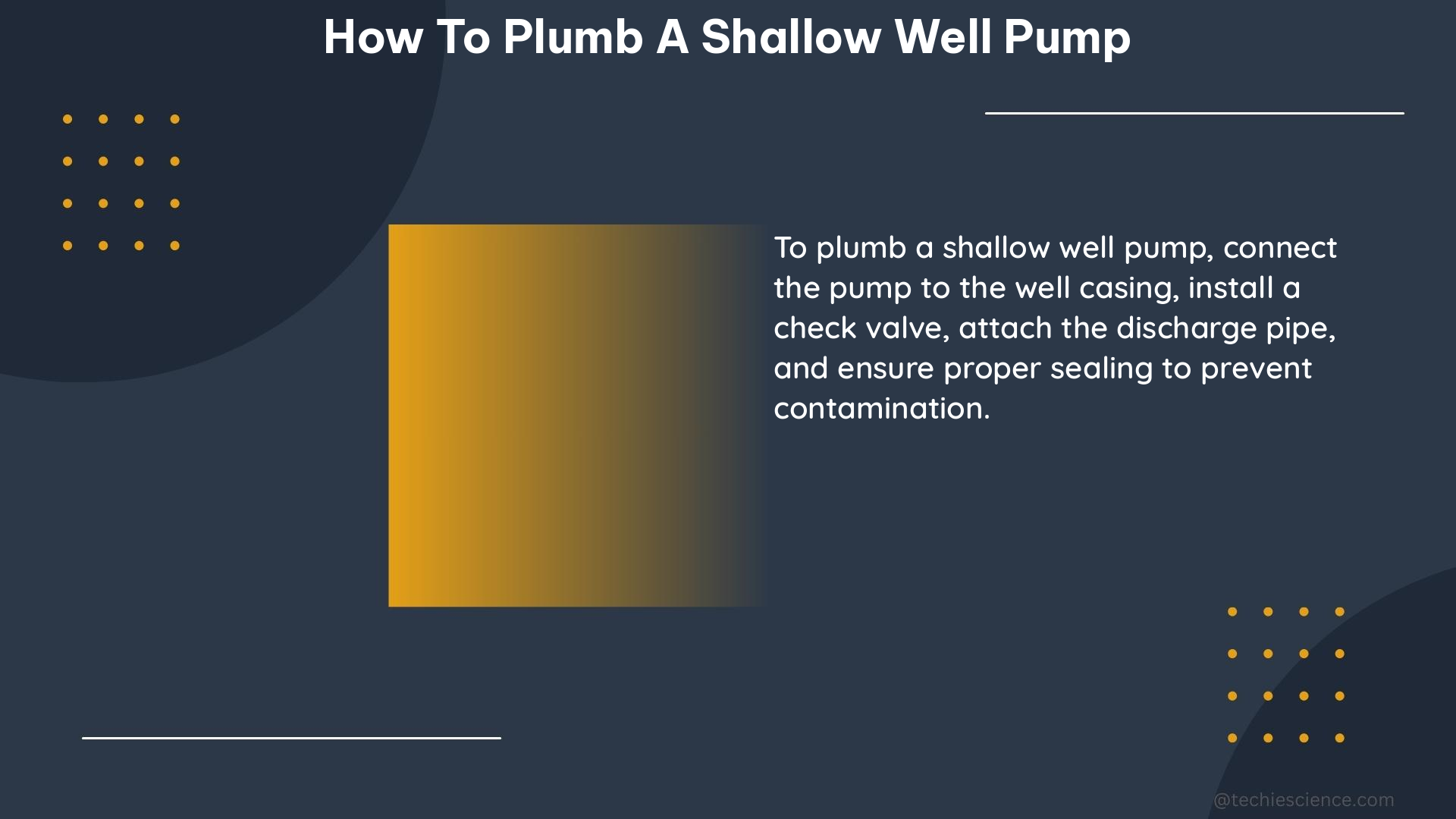Plumbing a shallow well pump is a crucial task for homeowners or DIY enthusiasts who rely on groundwater for their water supply. This comprehensive guide will walk you through the step-by-step process of properly plumbing a shallow well pump, providing technical specifications and valuable DIY tips to ensure a successful installation.
Determining the Well Depth
The first step in plumbing a shallow well pump is to accurately measure the depth of the well. This information is crucial in selecting the appropriate pump and components for the job. To measure the well depth, you can use a tape measure or a water level tool. It’s important to note that shallow wells are typically less than 25 feet deep, while deeper wells may require a submersible pump.
Choosing the Right Pump

Based on the well depth, you’ll need to select a shallow well pump that is suitable for the job. A jet pump is commonly used for shallow wells up to 25 feet deep, as it can provide sufficient water flow and lift. The pump you choose should have the following technical specifications:
- Pump Type: 1/2 HP jet pump
- Maximum Flow Rate: 10 gallons per minute (GPM)
- Maximum Lift: 25 feet
It’s crucial to follow the manufacturer’s instructions carefully when installing the pump to ensure proper operation and safety.
Installing the Piping
The next step is to install the piping that will connect the pump to the pressure tank. The piping should be made of either PVC or stainless steel, and it should be the right size for the pump and pressure tank. For this setup, you’ll need:
- Piping Size: 1-1/4 inch diameter
- Piping Material: PVC or stainless steel
- Maximum Piping Length: 100 feet
Use hose clamps to secure the piping connections and ensure there are no leaks. Applying pipe sealant can also help prevent leaks in the piping.
Incorporating a Check Valve
To prevent backflow of water, you’ll need to install a check valve in the piping. The check valve should be installed close to the pump and should be the right size for the piping. For this setup, you’ll need:
- Check Valve Size: 1-1/4 inch
- Check Valve Type: Spring-operated
- Maximum Flow Rate: 10 GPM
Proper installation of the check valve is crucial to maintain the system’s efficiency and prevent potential issues.
Setting Up the Pressure Tank
The pressure tank is an essential component of the shallow well pump system. Install the pressure tank according to the manufacturer’s instructions, ensuring that it is the right size for the pump and is installed close to the pump. For this setup, you’ll need:
- Pressure Tank Size: 2 gallons
- Maximum Working Pressure: 50 psi
Proper installation and sizing of the pressure tank will help maintain the system’s water pressure and ensure efficient operation.
Integrating the Pressure Switch
The pressure switch is responsible for controlling the pump’s operation based on the system’s water pressure. Install the pressure switch according to the manufacturer’s instructions, ensuring that it is adjusted to the right pressure setting for the pump. For this setup, you’ll need:
- Pressure Switch Range: 30-50 psi
- Pressure Switch Type: Adjustable
Carefully adjusting the pressure switch to the appropriate settings will help optimize the system’s performance and prevent issues such as short-cycling or water pressure fluctuations.
Testing and Troubleshooting
After completing the installation, it’s essential to test the system thoroughly. Turn on the pump and check for any leaks or issues with the operation. Ensure that the pressure switch is set to the right pressure and that the pump is delivering the expected water flow.
If you encounter any problems during the testing phase, use a multimeter to check the electrical connections and ensure they are safe and secure. Additionally, use a pressure gauge to verify that the pressure switch is set to the correct pressure.
Conclusion
Plumbing a shallow well pump requires attention to detail and a thorough understanding of the technical specifications involved. By following the step-by-step guide and adhering to the provided technical details, you can successfully plumb a shallow well pump and ensure its efficient and reliable operation.
Remember to always prioritize safety, follow the manufacturer’s instructions, and consult with a professional if you have any doubts or concerns during the installation process.
References
- Hooking Up a Shallow Well Pump
- DIY Shallow Well Pump Installation | Off Grid Cabin Build #54
- Shallow well pump installation – Love Plumbing & Remodel

The lambdageeks.com Core SME Team is a group of experienced subject matter experts from diverse scientific and technical fields including Physics, Chemistry, Technology,Electronics & Electrical Engineering, Automotive, Mechanical Engineering. Our team collaborates to create high-quality, well-researched articles on a wide range of science and technology topics for the lambdageeks.com website.
All Our Senior SME are having more than 7 Years of experience in the respective fields . They are either Working Industry Professionals or assocaited With different Universities. Refer Our Authors Page to get to know About our Core SMEs.